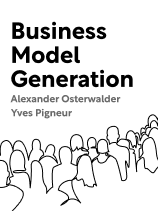

This article is an excerpt from the Shortform book guide to "Business Model Generation" by Alexander Osterwalder and Yves Pigneur. Shortform has the world's best summaries and analyses of books you should be reading.
Like this article? Sign up for a free trial here .
Why is it important to evaluate a business model? How do you know your model will actually work given your product/service and your target market?
Once you’ve defined your business model, you’ll need to evaluate if your organization is prepared to move forward with it. There are a number of tools that you can use to evaluate the viability of your business model.
In this article, we’ll explore four business model evaluation strategies you can use to analyze and optimize the effectiveness of your business models.
1. Prototype Multiple Versions of Your Business Model
Osterwalder and Pigneur argue that prototypes of your business model will allow you to better understand the structure and combined effects of your elements. With this understanding, you can create multiple prototypes to explore and test various possibilities and strategic directions. The authors suggest that you follow this sequence to create prototypes:
- Draft an idea: Briefly outline your idea describing the product or service you intend to offer and how you intend to make a profit.
- Create an outline of your business model: Expand upon your idea by including details for each of the nine elements in your business model.
- Test your business model: Gather financial data to estimate the potential for profit and talk to customers to evaluate the viability of your business model.
(Shortform note: The sooner you test your business model, the sooner you’ll know if your business model is worth investing in. For example, you can use targeted advertising to measure consumer interest, or use your email database to test your value offer on existing customers.)
2. Use a SWOT Analysis to Evaluate Your Business Model
Osterwalder and Pigneur suggest that you regularly use the Strengths, Weaknesses, Opportunities, and Threats (SWOT) analysis to evaluate the effectiveness of each of your individual elements, as well as your overall business model. The SWOT analysis provides a clear indication of the strengths and weaknesses of your current business model and reveals the opportunities and threats that you need to plan for.
There are various business model evaluation alternatives to the SWOT analysis. For example, NOISE would be useful when you’re actively looking for solutions to solve problems within your organization, whereas Porter’s Five Forces Model offers an effective way to analyze your competition.
3. Use Blue Ocean Method to Evaluate Your Business Model
Chan Kim and Renée Mauborgne, the authors of Blue Ocean Strategy, argue that businesses need to challenge established market boundaries and business strategies to create value in new markets. The “Four Actions Framework” encourages you to shift current industry standards by examining how you can pursue both differentiation (raise standards and create new features) and low costs (eliminate unnecessary features and cut costs).
The authors argue that using this framework to analyze the impact of each of your elements will put you in a position to create demand for innovative products and services in unclaimed markets.
(Shortform note: Blue Ocean Strategy by Chan Kim and Renée Mauborgne argues that businesses can effectively bypass competition by creating entirely new markets, whereas Porter’s Five Forces argues that businesses need to continually assess their competition to remain relevant in the marketplace. Management experts suggest that a blend of both strategies can be effective—use Four Actions Framework to create your new market and then use Porter’s Five Forces to defend against your eventual competitors.)
4. Align Your Organization and Resources
In addition to assessing your technology and resource requirements, consider the following questions inspired by Jay Galbraith’s Star Model to assess whether you need to restructure or adapt your business operations to successfully implement your business model:
- Do your current strategic goals align with the business model?
- Does your organizational structure support the business model?
- What processes will you need to implement to support the business model?
- How can you reward your team and encourage them to align with your business model objective?
- What people skills do you require to implement the business model?
You should organize all of your business operations around your business model. One criticism of this approach is that it doesn’t offer any flexibility for you to adapt your business model—every time you decide to update your business model, you’ll need to reevaluate and realign your entire organization to support your new business model. An alternative approach is to use your company values as a starting point—aligning your business model with your company’s values (instead of vice versa) will allow you the flexibility to innovate without having to evaluate your organizational structure.)

———End of Preview———
Like what you just read? Read the rest of the world's best book summary and analysis of Alexander Osterwalder and Yves Pigneur's "Business Model Generation" at Shortform .
Here's what you'll find in our full Business Model Generation summary :
- The nine elements that make up any successful business model
- Different ways you can combine these elements to create business model patterns
- Techniques you can use to generate innovative ideas






